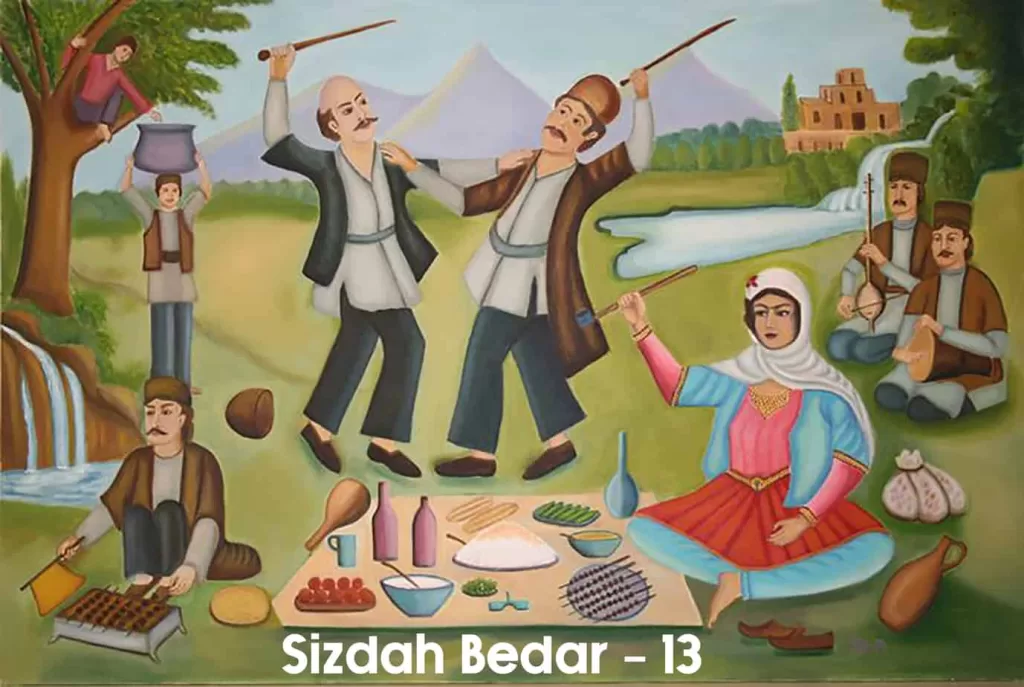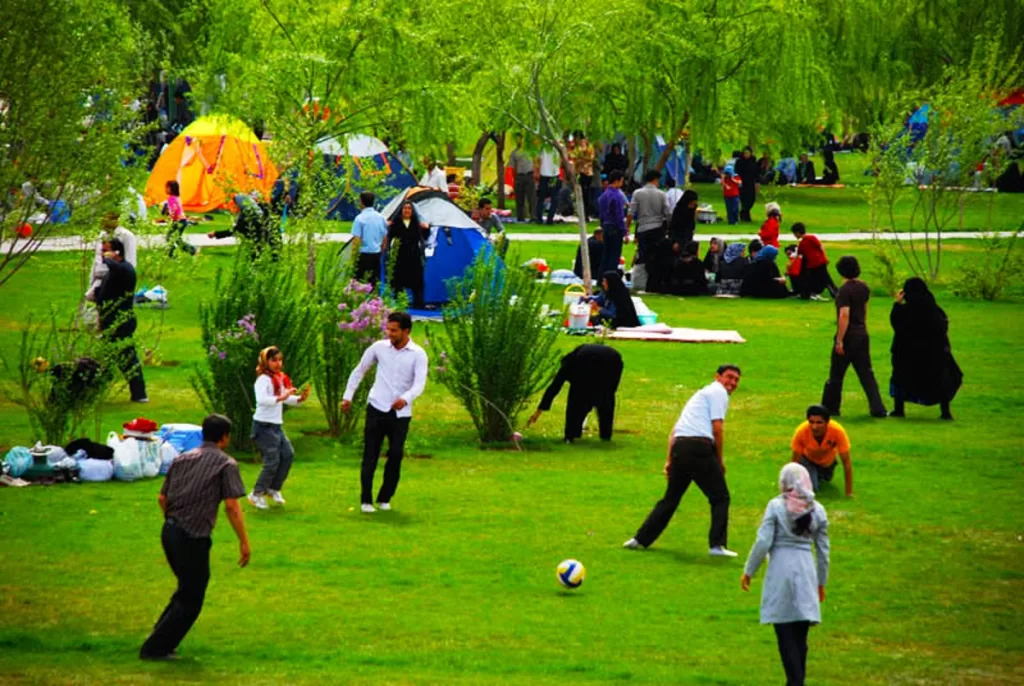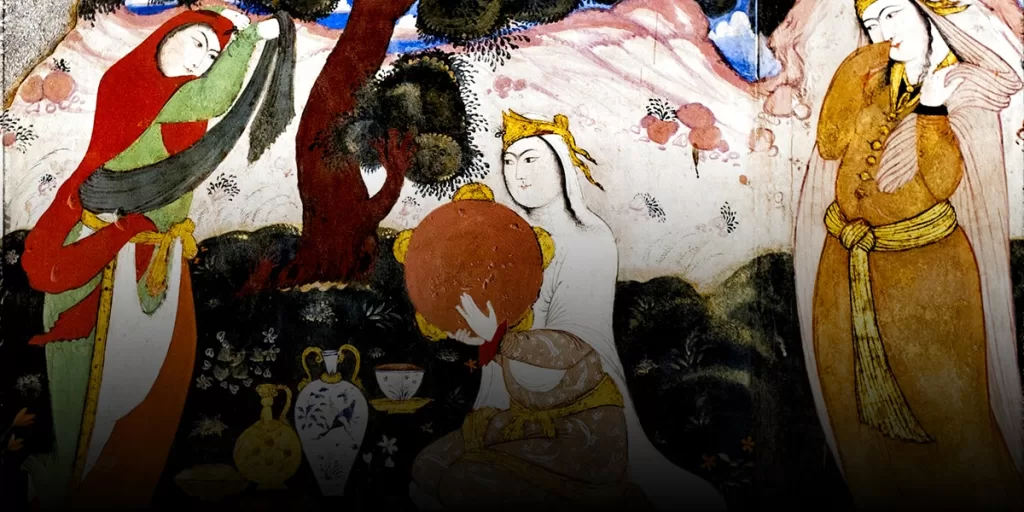Sizdah Bedar: The Ultimate Persian Spring Party that You Can’t Miss
Sizdah Bedar is one of the most important and joyful celebrations in the Iranian calendar. It marks the end of the Nowruz festivities and the beginning of spring. Sizdah Bedar literally means “getting rid of the thirteenth”, as it is celebrated on the thirteenth day of Farvardin, the first month of the Iranian year. On this day, Iranians go out for a picnic in nature with their family and friends, and enjoy the fresh air, greenery, and sunshine. Sizdah Bedar is also known as Nature’s Day or Picnic Day in Iran.
In this blog post, I will explain what Sizdah Bedar is, how it is prepared and celebrated, what its cultural significance is, and how Iranians in the diaspora keep this tradition alive. I will also share some tips and suggestions from Rad Travel Agency, a leading company that offers travel to Iran and other destinations in the Middle East.
5 Interesting Facts about Sizdah Bedar:
1. Sizdah Bedar has been celebrated in Iran for over 4,000 years.
2. The tradition of playing pranks on Sizdah Bedar may have originated from a belief that laughter and humor can ward off bad luck.
3. Some Iranians believe that throwing their sabzi polo leftovers into a river or stream will bring them good luck for the rest of the year.
4. In some parts of Iran, it’s customary to release goldfish into rivers or ponds on Sizdah Bedar to symbolize the release of negative energy.
5. According to Iranian folklore, if it rains on Sizdah Bedar, it’s a sign of good luck and prosperity for the coming year.
What is Sizdah Bedar?
The history and origins of Sizdah Bedar
Sizdah Bedar has ancient roots that date back to pre-Islamic times. It is believed that Sizdah Bedar was originally a Zoroastrian festival that celebrated the creation of nature and the renewal of life. According to some sources, Sizdah Bedar was also associated with Anahita, the goddess of water and fertility in ancient Iran. Some scholars suggest that Sizdah Bedar was a way of honoring Anahita and asking for her blessings for rain, crops, and children.
Sizdah Bedar has also been influenced by Islamic beliefs and practices over time. For example, some Muslims consider the thirteenth day of any month to be unlucky or evil, and therefore try to avoid staying at home or doing important tasks on that day. By going out for a picnic on Sizdah Bedar, Iranians may be trying to escape or counteract the bad luck or negative energy of the thirteenth day. Some Muslims also relate Sizdah Bedar to the story of Prophet Joseph (Yusuf), who was sold by his brothers to a caravan on the thirteenth day of Farvardin. By spending time with their loved ones on Sizdah Bedar, Iranians may be expressing their gratitude for their family bonds and their hope for reconciliation and forgiveness.

Sizdah Bedar traditions and customs
One of the most distinctive traditions of Sizdah Bedar is throwing away the Sabzeh (sprouts) that were grown during Nowruz as part of the Haft Seen table. Sabzeh symbolizes growth and prosperity, but it also absorbs all the sickness and misfortune from the house during Nowruz. Therefore, on Sizdah Bedar, Iranians take their Sabzeh to a stream or a river and toss it into the water, while making a wish for the new year. Some people also tie knots in their Sabzeh before throwing it away, especially young girls who wish to get married soon.
Another popular tradition of Sizdah Bedar is lying or joking with each other. This tradition may have originated from the idea that everything is reversed or upside down on the thirteenth day, so nothing can be taken seriously or literally. Some people also believe that lying or joking on Sizdah Bedar can ward off evil spirits or bad luck. Therefore, on Sizdah Bedar, Iranians try to trick or prank each other with funny stories or jokes, similar to April Fools’ Day in some Western countries.
How Sizdah Bedar is celebrated in different regions of Iran
Sizdah Bedar is celebrated throughout Iran with some regional variations and nuances. For example, in some parts of northern Iran, people make a special soup called Ash-e Doogh (yogurt soup) for their picnic, while in some parts of southern Iran, people eat fish and rice as their main dish. In some parts of western Iran, people play a game called Dookan Shekan (stone breaking), where they try to break a stone with another stone while making a wish. In some parts of eastern Iran, people perform a ritual called Fal-e Hafez (fortune telling with Hafez poems), where they open a book of Hafez poems at random and read the first verse as their prediction for the new year.
Sizdah Bedar Preparations
Before Sizdah Bedar, there are some preparations that need to be done. Here are some of them:
Cleaning the house before Sizdah Bedar
One of the traditions of Nowruz is to do a thorough cleaning of the house, called khaneh tekani, before the new year begins. This is done to get rid of the dust and dirt of the past year and welcome the new one with freshness and cleanliness. However, some people also do another round of cleaning before Sizdah Bedar, to make sure their house is tidy and organized when they return from their picnic. This also symbolizes leaving behind any bad luck or negativity that might have accumulated during the first 12 days of the year.

Setting up the Sizdah Bedar picnic
Another preparation for Sizdah Bedar is to plan and set up the picnic. This involves choosing a suitable location, such as a park, a garden, or a countryside spot, where there is plenty of greenery and fresh air. It also involves packing the necessary items for the picnic, such as food, drinks, utensils, blankets, cushions, games, music, etc. Some people also bring along their Haft Seen table or a smaller version of it, to keep the festive spirit of Nowruz alive.
Making Sabzeh (sprouts) for Sizdah Bedar
One of the most important items on the Haft Seen table is Sabzeh, which are sprouts grown from wheat, barley, lentil, or mung beans. Sabzeh represents growth, renewal, and fertility in the new year. However, on Sizdah Bedar, Sabzeh is not kept on the table anymore. Instead, it is taken out to be disposed of in nature. Some people make a special Sabzeh for Sizdah Bedar by tying ribbons around it or decorating it with flowers. They also make wishes on their Sabzeh before throwing it away.
Sizdah Bedar Picnic
The main event of Sizdah Bedar is the picnic itself. Iranians spend most of the day outdoors with their loved ones, having fun and relaxing. Here are some of the things they do during their picnic:
Traditional foods and drinks for Sizdah Bedar picnic
One of the joys of Sizdah Bedar is to enjoy delicious foods and drinks that are typical for this occasion. Some of the most common foods are kookoo sabzi (a herb omelet), ash reshteh (a noodle soup with herbs and beans), dolmeh (stuffed grape leaves), salad olivieh (a potato salad with chicken and eggs), and various kinds of sandwiches, fruits, nuts, and sweets. Some of the most popular drinks are sharbat (a sweet syrup mixed with water), doogh (a yogurt drink), chai (tea), and aragh (a distilled alcoholic beverage).

Popular games and activities during Sizdah Bedar picnic
Another way to enjoy Sizdah Bedar is to play games and engage in activities that are fun and entertaining. Some of the most popular games are backgammon, chess, cards, charades, bingo, etc. Some of the most common activities are singing, dancing, playing musical instruments, flying kites, hiking, biking, etc. Some people also participate in sports such as soccer, volleyball, badminton, etc.
Cultural Significance of Sizdah Bedar
Sizdah Bedar literally means “getting rid of the thirteenth” in Persian. It is believed that the number thirteen is unlucky and that by going out on the thirteenth day of Nowruz, people can avoid misfortune and evil. Sizdah Bedar is also known as Nature’s Day, as it celebrates the connection between humans and nature.
Sizdah Bedar’s connection to nature and renewal
One of the main rituals of Sizdah Bedar is throwing away the sabzeh, the sprouted wheat or lentils that are grown on a plate as part of the Haft Seen table. The sabzeh symbolizes growth and prosperity during Nowruz, but on Sizdah Bedar, it is tossed into a river or a lake, or under a fruit tree. This is done to return the sabzeh to nature and to thank it for its blessings. Some people also make a wish while throwing away the sabzeh, hoping for a fruitful year ahead.
Another ritual of Sizdah Bedar is tying knots with blades of grass or flowers. This is especially popular among young people who wish to find love or get married in the new year. They tie knots with their friends or partners and make a wish for their relationship. Some also believe that by untying the knots later in the year, they can make their wishes come true.

Sizdah Bedar and Iranian identity
Sizdah Bedar is not only a celebration of nature, but also a celebration of Iranian culture and identity. It is one of the oldest traditions in Iran, dating back to ancient times when Zoroastrianism was the dominant religion. Sizdah Bedar reflects the Zoroastrian values of harmony with nature and respect for life. It also shows the resilience and creativity of Iranians who have preserved this tradition despite political and social changes throughout history.
Sizdah Bedar is also a time for Iranians to express their national pride and solidarity. Many people wear green clothes or accessories, which represent nature and life. Some also carry Iranian flags or sing patriotic songs. Sizdah Bedar is a day when Iranians celebrate their common heritage and values, regardless of their religious or ethnic backgrounds.
How Sizdah Bedar has evolved over time
Sizdah Bedar has been celebrated for thousands of years, but it has also adapted to modern times and changing circumstances. For example, in recent years, some people have started to use Sizdah Bedar as an opportunity to raise awareness about environmental issues and to promote green initiatives. They organize clean-up campaigns, plant trees, or donate to environmental causes. They also try to reduce their waste and carbon footprint by using reusable utensils, containers, and bags.
Another way that Sizdah Bedar has evolved is by incorporating new elements from other cultures and countries. For instance, some people play games or sports that are popular in other parts of the world, such as soccer, volleyball, or frisbee. Some also enjoy different types of food or music that are not traditionally associated with Sizdah Bedar. These additions enrich the diversity and dynamism of Sizdah Bedar and make it more fun and enjoyable for everyone.
Sizdah Bedar in the Diaspora
Sizdah Bedar is not only celebrated in Iran, but also by millions of Iranians who live abroad. For them, Sizdah Bedar is a way to stay connected to their roots and to share their culture with others.
How Iranians abroad celebrate Sizdah Bedar
Iranians in the diaspora celebrate Sizdah Bedar in different ways depending on where they live and how they can access nature. Some gather in parks or gardens where they can enjoy the greenery and the sunshine. Some go to beaches or lakes where they can swim or boat. Some even go camping or hiking in forests or mountains where they can experience more adventure and solitude.
Religious Significance of Sizdah Bedar
Sizdah Bedar in the context of Nowruz celebrations
Sizdah Bedar is the final day of the Nowruz festivities, which start on the spring equinox and last for twelve days. Nowruz is an ancient celebration that dates back to at least 3,000 years ago and has its roots in Zoroastrianism, the pre-Islamic religion of Iran. Nowruz means “new day” and symbolizes the renewal of nature and life after the winter. During Nowruz, Iranians perform various customs and rituals to welcome the new year, such as cleaning their houses, setting up a haft-seen table with seven items that start with the letter S in Persian, visiting relatives and exchanging gifts, jumping over bonfires and wearing new clothes. Sizdah Bedar is the culmination of these celebrations, as it is believed that staying indoors on this day would bring bad luck. Therefore, Iranians go out to nature to enjoy its beauty and freshness and to avoid any evil spirits that may lurk inside their homes.
The spiritual aspects of Sizdah Bedar
Sizdah Bedar is also a day of spiritual significance for many Iranians. One of the most common rituals performed on this day is tying knots with blades of grass or wheat. This is done by young girls who wish to get married in the coming year. They make a wish and tie a knot with two blades of grass, symbolizing a union between two people. Then they throw the grass into a river or a lake, hoping that their wish will come true. Another ritual is related to one of the items on the haft-seen table: sabzeh, which is sprouted wheat or barley grown in a dish. Sabzeh represents growth and prosperity in the new year. On Sizdah Bedar, Iranians take their sabzeh to nature and toss it away, as a way of returning it to its source and expressing gratitude for its blessings. Some people also believe that sabzeh collects all the sickness and misfortune from their households during Nowruz, so they get rid of it on Sizdah Bedar to start the new year with a clean slate.
How different religions in Iran celebrate Sizdah Bedar
Sizdah Bedar is not only celebrated by Muslims in Iran, but also by other religious minorities who have their own traditions and customs for this day. For example, Zoroastrians celebrate Sizdah Bedar as Hamaspathmaedaya, which means “the festival of all times”. They consider this day as a sacred time when all souls return to God and all creation is purified. They also perform rituals such as offering fruits and flowers to fire temples and praying for peace and harmony in the world. Christians in Iran celebrate Sizdah Bedar as Easter Sunday, which coincides with Sizdah Bedar every few years. They attend church services and celebrate the resurrection of Jesus Christ with eggs, cakes and chocolates. Jews in Iran celebrate Sizdah Bedar as Pesach Sheni, which means “the second Passover”. They observe this day as a second chance to celebrate Passover for those who missed it due to impurity or travel. They eat matzah bread and recite prayers from the Torah.
Sizdah Bedar and Gender Roles
Traditional gender roles during Sizdah Bedar celebrations
Sizdah Bedar has historically been a day when gender roles were more relaxed and flexible than usual in Iranian society. Women and men could mingle more freely and enjoy each other’s company without strict supervision or segregation. Women could also participate in activities that were normally reserved for men, such as playing musical instruments, singing songs, riding horses or bicycles, playing chess or backgammon, or even wrestling. Men could also show their softer side by helping with cooking, serving food or taking care of children.
10 FAQs and Answers:
1. What is Sizdah Bedar?
Sizdah Bedar is an Iranian festival celebrated on the thirteenth day of Farvardin, the first month of the Persian calendar. It marks the end of the Persian New Year holiday season and the arrival of spring.
2. What does “Sizdah Bedar” mean?
“Sizdah” means thirteen and “Bedar” means to get rid of. So “Sizdah Bedar” literally translates to “getting rid of the thirteenth”.
3. What are some traditions associated with Sizdah Bedar?
The most popular tradition is spending the day outdoors, usually in a park or rural area. People often have picnics and play games, and it’s also common to play pranks on each other. Some people believe that tying blades of grass around their wrists will bring good luck for the rest of the year.
4. Why is Sizdah Bedar celebrated?
Sizdah Bedar marks the end of the Persian New Year holiday season and the start of spring. It’s a time to celebrate new beginnings, enjoy the natural world, and spend time with loved ones.
5. How long has Sizdah Bedar been celebrated?
Sizdah Bedar has been celebrated in Iran for thousands of years. The festival has its roots in Zoroastrianism, an ancient Iranian religion.
6. Do Iranians all celebrate Sizdah Bedar the same way?
No, there are many regional variations in how Sizdah Bedar is celebrated in Iran. However, spending time outdoors and enjoying nature is a common theme across the country.
7. Is Sizdah Bedar a public holiday in Iran?
No, Sizdah Bedar is not an official public holiday in Iran. However, many businesses and schools close for the day so people can participate in the festivities.
8. What foods are commonly eaten on Sizdah Bedar?
Many people bring traditional Iranian dishes to their picnics, such as sabzi polo (herb rice) and kuku sabzi (herb frittata). Fruit, nuts, and sweets are also popular.
9. Are there any religious elements to Sizdah Bedar?
While Sizdah Bedar has its roots in an ancient Iranian religion, it is now considered a secular holiday and is celebrated by Iranians of all religious backgrounds.
10. When is Sizdah Bedar usually celebrated?
Sizdah Bedar falls on April 2nd or 3rd in the Gregorian calendar, depending on when the vernal equinox occurs in Iran.

